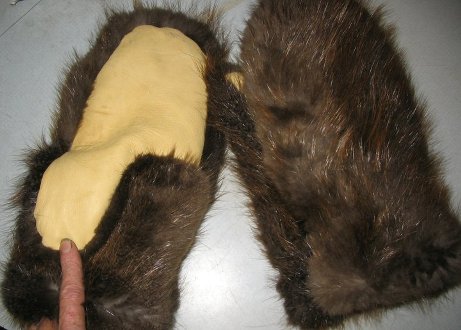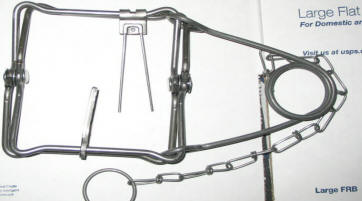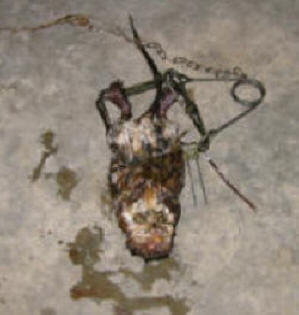
For years the survival community has thought survival trapping was homemade deadfalls and single straight wire snares. Most people, in fact about 97% of these people, who try this method never catch anything and give up in frustration.
Deadfalls are extremely hard to master and as many people have seen, even Les Stroud on SurvivorMan never caught anything in his deadfalls. (I could be wrong, but I never saw them work for him.) I am not attacking Les, he is a true outdoorsman, but with all his skills he was unable to secure meat using this method. What chance does the average person have?
Trapping and snaring is much like hunting. There is a learning curve, and the only way to overcome that is to go out and do it.
Depending on where you live, the fur market is making a comeback and you could actually make a profit in a few years (or at least break even). But just like the stock market, fur prices change every year. Nothing in life is a guarantee. But right now, you can sell western Northern coyotes for $60. Northern pelts are thicker, but it is seasonal. The fur is only prime during fall and winter months.
Trapping and snaring is an art. You are trying to narrow down the animal world to just your set. At the beginning, any little mistake you make can (and will) end up as a missed catch. That is why I stress – practice ahead of time. Water animals are far easier to catch, and for a beginner I suggest learning to catch muskrats or beaver first. Reading their tracks and sign is far easier in the mud. I taught a survival class last spring and we snared two beavers out of 2 snares in 2 checks. A beginner might set 12 snares with only one catch.

This is a modern, self-locking snare. No spring pole is used, the animal is the trigger, meaning as the animal hits the snare, the loop closes on him and locks. That was about a 45-pound beaver, a large male shoot with a .22. That is a lot of meat for a would-be survivor. The old wives’ tale is that only the tail is good to eat. LOL, the ole mountain men were smart, and I believe they wanted the fatty grease.
Their way of cooking the tail was to cut it off and toss it in hot coals. Once the hard scaly parts start to peel off flip it and cook until both sides are pure white. It is greasy and not very good tasting. But of course, as a prepper, in the-end-of-the-world scenario, you would never want to waste anything. But the best eating on a beaver is the backstraps. In my opinion, far better than venison backstraps. Roast the legs over hot coals slowly or on a charcoal grill. Back legs take about 90 minutes to cook, and you will be surprised how good they taste.
Notice in the far-right lower part of the picture is 2 rebar trap stake. These are pounded in the ground to form an “X” because beaver are large powerful animals used to moving logs and can pull out a single stake unless it is super long. The one advantage with the modern snare is you can feed the loop end through the swivel around a tree to hold most animals, of course this doesn’t work for beaver, because they can chew the tree down and escape.

A modern snare. Starting at the top right, you have stop button, a washer, a swivel, a support collar, then the lock, in this case a sure lock, and another stop button. The cable is an 3/32 7×7 aircraft cable made of galvanized metal. Once you master the snares, they are a great tool for survival, lightweight, easy-to-use and care for. If you don’t want to sell what you catch. you can always make things out of the fur.
Living in North Dakota I decide to get beaver mittens made up because I could not find any manmade gloves or mittens to keep my hands warm when it was 40 below zero.

Another great tool for the prepper is the modern conibear trap. It is a quick kill type trap like a fancy mouse trap. In my opinion, the 110 conibear is the best survival trap ever made. I have caught muskrats, mink, rabbits, squirrels, and yes. even fish in this trap.

What people have trouble understanding is the animal is not stepping on this trap but walking through it. The trap fires on them, quickly killing them.

Setting the trap is a learning curve, and I highly recommend you get my trapping book for step-by-step instruction on setting the trap and how to place it in the field. The trap is awesome due to the fact you can fold it up and stick it in your pocket, weighs 12 ounces and can be used to get you food in a hurry. I believe it is in my Survival # 8 DVD that I show setting the trap in the winter at a cottontail rabbit den and coming back in 1 hour and having a rabbit ready for dinner.
For people who want to shorten their learning curve, I teach training classes tailored to your needs. This covers everything from trap and snare prep to actually setting traps in the field. Skinning, tanning, cooking wild plants etc.
I have plenty of people that have become very successful trappers from reading my book and watching DVDs. It all depends on your level of experience in the woods. But like I said at the beginning of the article, there is a learning curve. Just because you have equipment doesn’t mean you are a trapper. But once you learn this fine art, you can out do any hunter alive. It is simple math; each trap or snare is like a little hunter working for you 24-7.
There is something almost life changing walking through the forest harvesting the animals that touches your soul as you walk the path of a Modern Mountain Man. Catch the fever and learn a valuable skill.
Bruce Buckshot Hemming

2 comments
I don’t know about anyone else, but the pictures for this post aren’t here. There’s a square, and little colored things in the middle of the squares. But that’s it…
Fixed it, thanks.